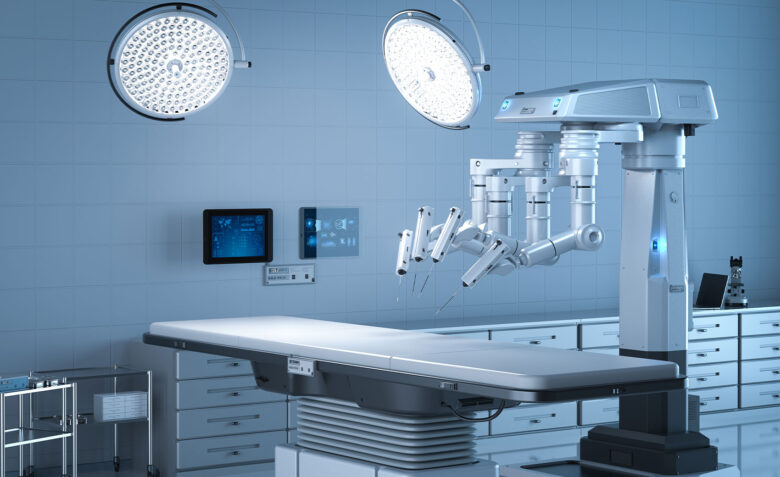The operating room has always been the place where new ideas and life-saving care converge. Over the years, surgical methods have shifted from invasive treatments with long recovery times to more precise, minimally invasive methods. One of the most important new technologies recently is the rise of robotic surgery. Robot-assisted surgery will not only become increasingly popular by 2025, but it will also change how surgeries are performed, how patients recover, and how outcomes are improved. These robotic instruments offer surgeons greater control, precision, and freedom. Robotic surgery does not replace human skills but rather enhances them, allowing medical teams to perform complex procedures more safely and efficiently.
Learn How Robotic Surgery Works
The robots used in robotic surgery are operated by surgeons who have undergone extensive training. In most cases, these systems feature a console where the surgeon sits and operates, robotic arms that hold the instruments, and a high-definition camera that provides a clear, magnified view of the surgical field. As the surgeon moves their hands, the robotic instruments inside the patient respond precisely. Robotic systems can make very small incisions using small instruments that can rotate and bend more than human hands. This capability is in stark contrast to traditional surgeries that require larger incisions and manual manipulation. This new concept reduces trauma to the body and allows surgeons to perform more precise operations.
More Precision, Less Human Error
One of the major advantages of robotic surgery is that it brings greater precision to the operating room. Even the most skilled hands may experience fatigue or tremble during a lengthy procedure. Robotic systems avoid these problems with constant, continuous motion and scaling and filtering to eliminate even the slightest vibrations. Such technology makes incisions more precise, with less bleeding and less risk of damage to surrounding tissue. Robotic camera systems also make it easier for surgeons to observe the procedure, as they can see the surgical site in high-definition, three-dimensional images. When surgeons can see clearly and operate more precisely, they work more safely, especially in sensitive areas such as the brain, heart, or spine.
Improving the Possibilities for Minimally Invasive Surgery
In many cases, minimally invasive surgery is superior to open surgery because it is less painful, scars are smaller, and it heals faster. Robotic surgery makes minimally invasive surgeries possible by allowing doctors to operate through incisions just a few millimeters wide. Because the robotic arms are so flexible and agile, they can reach areas that would otherwise require large incisions or moving organs. Robot-assisted treatments often mean shorter hospital stays, less blood loss, and a faster return to normal activities. This method is particularly beneficial for patients with complex medical conditions who would otherwise face a long and difficult recovery period after standard surgery.
Preparing Surgeons for the Robotic Age
Robotic surgery has not only changed the way surgeries are performed but also the way surgeons are trained. Previously, surgical training was primarily based on practice, observation, and time spent in the operating room. Modern medical institutions use high-tech simulation systems to help doctors learn how to use robotic systems safely in a controlled environment. These models can help doctors practice, test their skills, and experience different situations. As surgeons continue to practice, they gain more confidence in their ability to use the console and operate the robotic arms. As robotic surgery becomes more popular, more and more training programs are being developed to ensure the next generation of doctors can use this technology correctly.
Cost and Accessibility Issues
Robotic surgery offers many advantages, but there are also some challenges, particularly regarding cost and availability. Purchasing, managing, and operating a robotic system is expensive. Hospitals must not only invest in the technology but also train staff and provide support services. This can make it more difficult for smaller or remote medical centers to perform robotic surgery. However, as the technology becomes more popular and competition increases, costs are gradually decreasing. In the long term, robotic surgery can reduce medical costs by reducing complications, shortening hospital stays, and reducing the number of follow-up surgeries. Improving access to robotic surgery remains our top priority, and we are currently working to implement these systems in more areas.
The Future of Robotic Surgery
It seems that robotic surgery will be around for a long time. To make robotic systems smarter and more powerful, new technologies such as artificial intelligence, machine learning, and virtual reality are being integrated. Surgeons can use artificial intelligence to support complex surgeries, and real-time analysis and commentary can help them make informed decisions during surgery. Telerobotic surgery, where surgeons perform operations on patients remotely, is also becoming an option. Such technology can help people in remote areas or areas with limited medical resources receive professional care. Research and development advances will blur the distinction between human skills and robotic assistance. Such developments will lead to better medical services and new ideas.
Conclusion
Robotic surgery is more than a new technology; it’s the dawn of a new era of the best surgery ever. This approach combines the skills of a skilled physician with the precision and stability of a robotic system, transforming what’s possible in the operating room. It improves outcomes, reduces risks, and changes what’s possible. Surgeons are given the tools to enhance their skills and reach more patients. Patients experience better overall results, faster recoveries, and less pain. Cost and accessibility remain challenges, but robotic surgery is evolving and improving. This promises a future where more people will have faster, more accurate, and easier access to high-quality care. From 2025, the operating room will be the place where human intelligence and machine innovation collaborate to save and improve lives.
FAQs
1. What is robotic surgery?
Surgeons use robotic equipment to perform operations with greater precision, flexibility, and control than traditional surgery. This is robotic surgery.
2. Is robotic surgery safe?
Many people worldwide use robotic surgery because it is safe and reliable. It enables more precise surgical procedures, often with fewer complications and a faster recovery.
3. Is robotic surgery performed automatically?
No, the robotic system is always controlled by the surgeon. The robot does not decide what to do; it follows the surgeon’s hand movements and instructions.
4. What are the benefits of robotic surgery for users?
Patients typically experience smaller incisions, less pain, less blood loss, shorter hospital stays, and a faster recovery than with standard surgery.




